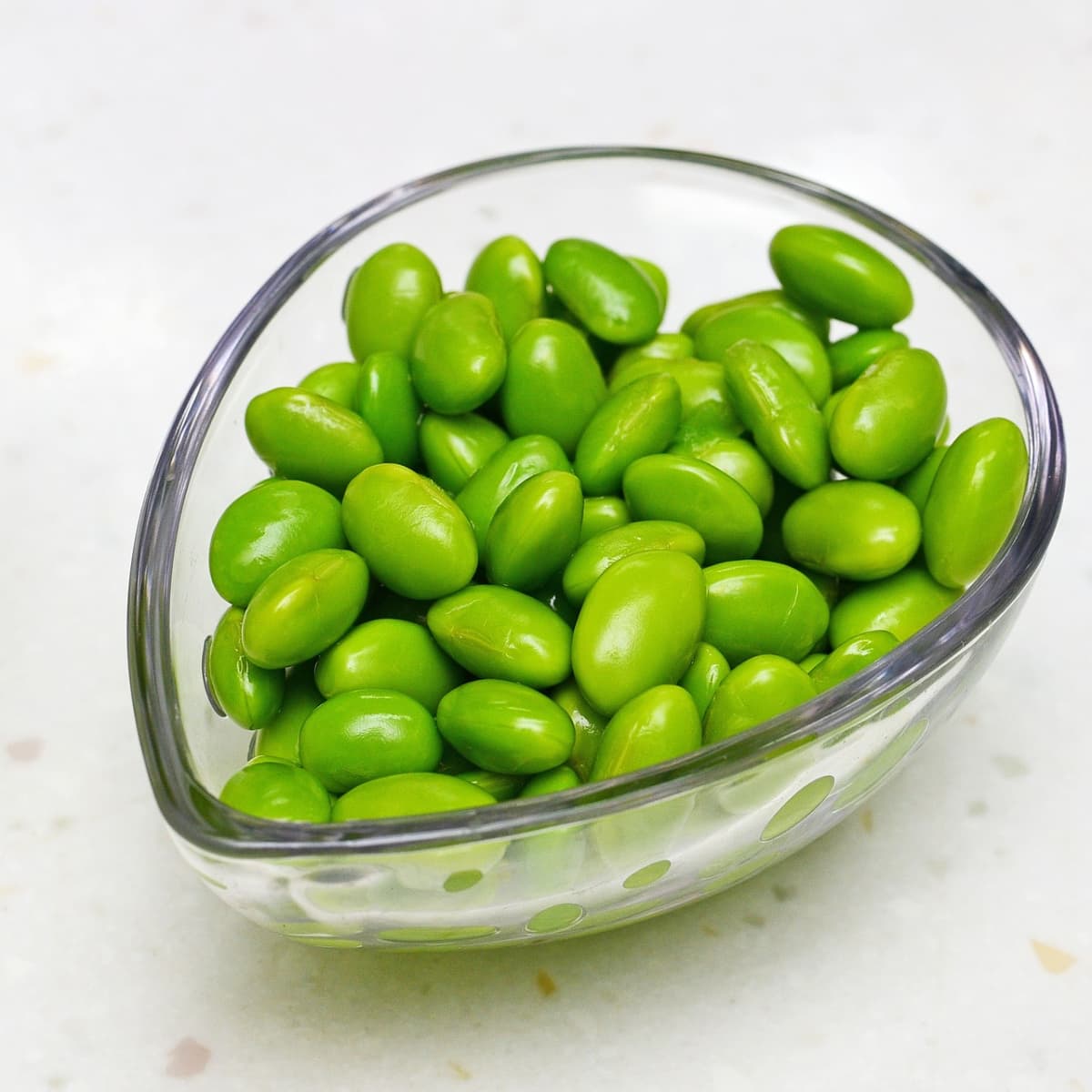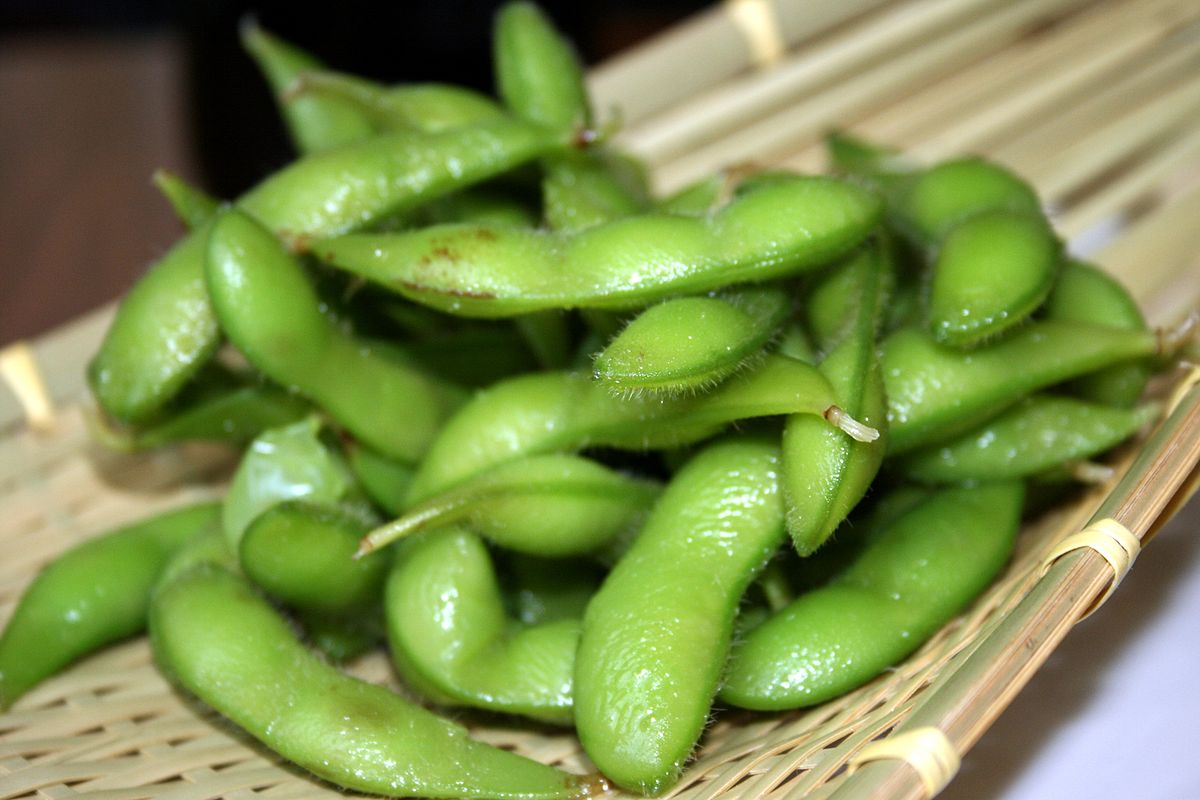Introduction
Soybeans have been a staple in Asian cuisine for centuries, and two popular varieties that have gained international recognition are edamame and mukimame. These legumes offer a healthy and delicious snack option, packed with essential nutrients, protein, and fiber. While both edamame and mukimame share similarities, they also have distinct differences in taste, texture, and preparation. In this article, we will explore the world of soybeans, dive into the details of edamame and mukimame, and provide insights into their cultural significance, nutritional value, taste, texture, and culinary uses. Whether you are a soybean enthusiast or simply looking to incorporate more plant-based options into your diet, this article will leave you with a better understanding of these versatile legumes and help you make an informed choice between edamame and mukimame.
Overview Of Edamame And Mukimame

Edamame and Mukimame are two types of soybeans that have gained popularity worldwide. Edamame is the traditional soybean, commonly found in Asian cuisine and often enjoyed as a snack or added to dishes like stir-fries and salads. On the other hand, Mukimame is a modern variation that has gained recognition in recent years. Unlike Edamame, Mukimame is harvested later, giving it a slightly different taste and texture. Both options offer a nutritious and protein-packed snack, making them a great choice for those looking for plant-based alternatives.
Cultural And Culinary Significance Of Soybeans
Soybeans hold immense cultural and culinary significance around the world. In Asian cuisine, especially in countries like China, Japan, and Korea, soybeans have been a staple for centuries. They are deeply ingrained in the traditional diet and are used to make a wide variety of dishes, including tofu, soy sauce, miso, and tempeh. In addition to their versatility in cooking, soybeans also have cultural importance as they are considered a symbol of health and longevity. The rich history and widespread use of soybeans make them a beloved and respected ingredient in many cultures.
Edamame: The Traditional Soybean
Edamame is a traditional soybean variety that has been a staple in East Asian cuisine for centuries. These immature soybeans are harvested while still in their pods and have a bright green color. Edamame is typically boiled or steamed and served as a snack or appetizer. It has a unique and slightly nutty flavor that pairs well with a sprinkle of salt. Edamame is not only delicious but also packed with nutritional benefits. It is a good source of protein, fiber, vitamins, and minerals, making it a healthy choice for individuals looking to incorporate plant-based options into their diet.
What Is Edamame?

Edamame is a traditional soybean variety that has been a staple in East Asian cuisine for centuries. These immature soybeans are harvested while still in their pods and have a bright green color. Edamame is typically boiled or steamed and served as a snack or appetizer. It has a unique and slightly nutty flavor that pairs well with a sprinkle of salt. Edamame is not only delicious but also packed with nutritional benefits. It is a good source of protein, fiber, vitamins, and minerals, making it a healthy choice for individuals looking to incorporate plant-based options into their diet.
Nutritional Value And Health Benefits Of Edamame
Edamame is not only delicious but also packed with nutritional benefits. It is a good source of protein, fiber, vitamins, and minerals, making it a healthy choice for individuals looking to incorporate plant-based options into their diet. Edamame is also low in calories and fat, making it a great snack for those watching their weight. Additionally, it contains antioxidants, such as isoflavones, which have been shown to have numerous health benefits, including reducing the risk of heart disease and certain types of cancer. Eating edamame may also help to improve cholesterol levels and support bone health.
Mukimame: The Modern Soybean
Mukimame is a modern variation of soybeans that has gained popularity in recent years. It is essentially a younger and less mature version of the soybean, harvested before it reaches full maturity. This gives Mukimame a sweeter and more tender taste compared to Edamame. The term “Mukimame” itself translates to “peeled beans,” as the beans are often shelled before being cooked and consumed. Mukimame is commonly used in a variety of dishes, including salads, stir-fries, and even as a substitute for traditional beans in recipes. It is a versatile and healthy option for those seeking a modern twist on the traditional soybean.
What Is Mukimame?

Mukimame is a modern variation of soybeans that has gained popularity in recent years. It is essentially a younger and less mature version of the soybean, harvested before it reaches full maturity. This gives Mukimame a sweeter and more tender taste compared to Edamame. The term “Mukimame” itself translates to “peeled beans,” as the beans are often shelled before being cooked and consumed. Mukimame is commonly used in a variety of dishes, including salads, stir-fries, and even as a substitute for traditional beans in recipes. It is a versatile and healthy option for those seeking a modern twist on the traditional soybean.
Differences Between Edamame And Mukimame
Edamame and Mukimame may appear similar at first glance, but there are distinct differences between the two soybeans. Here are the key contrasts:
- Harvesting Time: Edamame is harvested when the soybeans reach full maturity, while Mukimame is harvested at a younger stage, before full maturity.
- Color: Edamame beans have a vibrant green color, while Mukimame beans are lighter in shade, with a yellowish-green hue.
- Taste: Edamame has a mild, slightly nutty flavor, while Mukimame is known for its sweeter, more tender taste.
- Texture: Edamame beans have a firmer texture, while Mukimame beans are softer and more delicate.
- Availability: Edamame is more widely available in its traditional form, while Mukimame is a relatively newer variation and may be less commonly found.
In summary, the differences between Edamame and Mukimame lie in their harvesting time, color, taste, texture, and availability. It ultimately comes down to personal preference when choosing between the two for your culinary endeavors.
Taste And Texture
When it comes to taste and texture, Edamame and Mukimame offer unique experiences. Edamame is known for its mild and slightly nutty flavor. The beans have a firm and chewy texture, making them satisfying to bite into. On the other hand, Mukimame has a sweeter taste compared to Edamame. The beans are softer and more delicate in texture, giving a melt-in-your-mouth sensation. Whether you prefer the crunchier texture of Edamame or the tender bite of Mukimame, both soybeans provide a delightful snacking or cooking experience.
Flavor Profile And Taste Comparison Of Edamame And Mukimame

When it comes to flavor, Edamame and Mukimame offer distinct tastes. Edamame has a mild and slightly nutty flavor, while Mukimame has a sweeter taste. Edamame’s flavor is more subtle and earthy, allowing the natural sweetness of the soybean to shine through. On the other hand, Mukimame has a more pronounced sweetness, making it a delightful snack or addition to dishes. Whether you prefer the nuttiness of Edamame or the sweetness of Mukimame, both soybeans provide unique flavors that can be enjoyed in various culinary creations.
Textural Differences Between The Two Soybeans
Edamame and Mukimame also differ in texture. Edamame beans have a slightly firmer and more chewy texture compared to Mukimame. The outer skin of Edamame beans is thick and can be quite tough, giving them a satisfying bite. On the other hand, Mukimame beans have a softer and creamier texture. The skin of Mukimame beans is thinner and more tender, making them melt in your mouth. Whether you prefer the satisfying chew of Edamame or the creamy texture of Mukimame, both soybeans offer a delightful sensory experience.
Uses And Recipes
Edamame and Mukimame are versatile ingredients that can be used in a variety of dishes. Edamame pods are commonly served as an appetizer or snack, often boiled or steamed and sprinkled with salt. They can also be added to salads, stir-fries, or used as a topping for noodles.
Mukimame, on the other hand, can be used as a side dish or added to stir-fries, soups, or even mashed into a spread. They can also be added to grain bowls, sushi rolls, or incorporated into dips and spreads.
Both Edamame and Mukimame are great sources of plant-based protein and can be enjoyed in various ways, allowing for creativity in the kitchen.
Traditional And Popular Recipes Using Edamame

Edamame, with its nutty flavor and vibrant green color, is a versatile ingredient that can be used in various recipes. One popular traditional way to enjoy edamame is by simply boiling or steaming the pods and sprinkling them with salt. Edamame can also be incorporated into salads, stir-fries, and noodle dishes, adding a nutritious and flavorful element. For a unique twist, try making edamame hummus or blending it into a creamy dip. The possibilities are endless when it comes to incorporating this delicious and nutritious soybean into your culinary creations.
Creative Ways To Cook And Enjoy Mukimame
Mukimame offers a versatile option for cooking and enjoying soybeans in unique and delicious ways. Here are some creative ideas to make the most of this nutritious legume:
- Mukimame stir-fry: Add sautéed mukimame to your favorite stir-fry recipe for an extra burst of flavor and texture.
- Mukimame salad: Toss cooked mukimame with mixed greens, cherry tomatoes, cucumbers, and a tangy vinaigrette for a refreshing and protein-packed salad.
- Mukimame dip: Blend cooked mukimame with garlic, lemon juice, and tahini to create a creamy and flavorful dip that pairs perfectly with pita bread or veggies.
- Mukimame hummus: Swap chickpeas with mukimame in your hummus recipe to create a vibrant and nutritious dip for crackers, bread, or vegetables.
- Mukimame soup: Add cooked mukimame to vegetable or miso soup for an additional protein boost and a satisfying texture.
By trying these creative ways to cook and enjoy mukimame, you can explore the unique flavors and versatility of this soybean variety. Enjoy experimenting with different recipes and incorporating mukimame into your culinary repertoire.
Conclusion
In conclusion, Edamame and Mukimame are both delicious and nutritious options when it comes to soybeans. Edamame, with its firm texture and nutty flavor, is a traditional soybean variety that has been enjoyed for centuries. Mukimame, on the other hand, offers a sweeter and more tender taste due to its early harvest. Both soybeans are rich in protein, fiber, and essential nutrients, making them a healthy choice for snacking or incorporating into various dishes. Ultimately, the choice between Edamame and Mukimame comes down to personal preference and the desired flavor and texture profile.
Choosing Between Edamame And Mukimame Based On Personal Preferences

Choosing between Edamame and Mukimame ultimately comes down to personal preferences and the desired flavor and texture profile. Edamame, with its firmer texture and nutty flavor, is a classic choice that has been enjoyed for centuries. Mukimame, on the other hand, offers a sweeter and more tender taste due to its early harvest. It is important to consider your own taste preferences and how you plan to use the soybeans in your dishes. Whether you enjoy the traditional taste of Edamame or the sweeter profile of Mukimame, both soybeans provide a healthy and nutritious option for snacking or incorporating into various recipes.
Final Thoughts And Recommendations
In conclusion, the choice between Edamame and Mukimame ultimately comes down to personal preferences and desired culinary outcomes. Both soybeans offer their own unique flavor profiles and textures, providing versatility in various dishes. Whether you prefer the traditional nutty taste of Edamame or the sweeter and tender profile of Mukimame, incorporating soybeans into your meals can add a healthy and nutritious element. Experiment with different recipes and cooking methods to fully explore and appreciate the world of soybeans. Enjoy the benefits and flavors that these legumes bring to your culinary creations.
Frequently Asked Questions about Edamame vs Mukimame
Q: What is Edamame?
A: Edamame is a popular Japanese side dish made from young soybeans, typically harvested when they are still green and enclosed in their pods. It is a great source of plant-based protein, fiber, and essential nutrients, making it a popular choice for health-conscious individuals.
Q: What is Mukimame?
A: Mukimame is essentially the same as edamame but with a slight difference in preparation. Unlike traditional edamame, mukimame is precooked and shelled, making it more convenient and time-saving. The name “mukimame” is derived from the Japanese words “muki” (meaning “shelled”) and “mame” (meaning “bean”).
Q: What is the difference between Edamame and Mukimame?
A: The main difference between the two lies in the level of preparation. Edamame is typically served in its pod, requiring the consumer to squeeze the beans out before eating. On the other hand, mukimame is already shelled, eliminating the need to remove the beans from the pods.
Q: Are there any nutritional differences between Edamame and Mukimame?
A: From a nutritional standpoint, there is no significant difference between edamame and mukimame. Both are excellent sources of plant-based protein, fiber, vitamins, and minerals. The slight variation in preparation does not affect the nutritional profile of the soybeans themselves.
Q: How are Edamame and Mukimame typically served?
A: Edamame is commonly served as a warm or cold appetizer in Japanese cuisine. The pods are usually steamed, boiled, or microwaved, lightly salted, and served as a snack or an accompaniment to meals. Mukimame, being already shelled, can be easily added to salads, stir-fries, soups, or used as an ingredient in various dishes.
Q: Where can I find Edamame or Mukimame?
A: Edamame is widely available in most grocery stores, either fresh or frozen. It can also be found in Asian markets or specialty stores. Mukimame, as a more specific product, may be found in the frozen section of select stores or food outlets that offer a wide variety of soy products.
Q: Are Edamame and Mukimame suitable for everyone?
A: Edamame and mukimame are considered safe and healthy for the majority of people. However, individuals with soy allergies or those on specific diets may need to avoid consuming them. It is always recommended to consult with a healthcare professional or registered dietitian if you have any concerns about including edamame or mukimame in your diet.
Q: Can Edamame or Mukimame be cooked at home?
A: Absolutely! Both edamame and mukimame can be easily cooked at home. For edamame, simply boil the pods in salted water for about 5-7 minutes until the beans are tender. Mukimame can be cooked by boiling or steaming the shelled soybeans for a few minutes until they become soft and slightly chewy.
Q: Are Edamame and Mukimame suitable for vegans and vegetarians?
A: Yes, both edamame and mukimame are suitable for vegans and vegetarians. They are excellent plant-based protein sources and can be a useful addition to a balanced vegetarian or vegan diet.
In summary, edamame and mukimame are essentially the same, with the only difference being the level of preparation. Edamame is served in its pods, while mukimame is already shelled. They both provide similar nutritional benefits and can be enjoyed in various ways. Whether you prefer the traditional experience of popping edamame out of the pods or the convenience of mukimame, both options are delicious and healthy additions to your diet.

Everyone has had a recipe that looked great on paper but ended up burning once you got into the kitchen. Obviously, a recipe isn’t just about what ingredients go into it. Knowing how you prepare a dish has a strong impact on how it finally tastes.